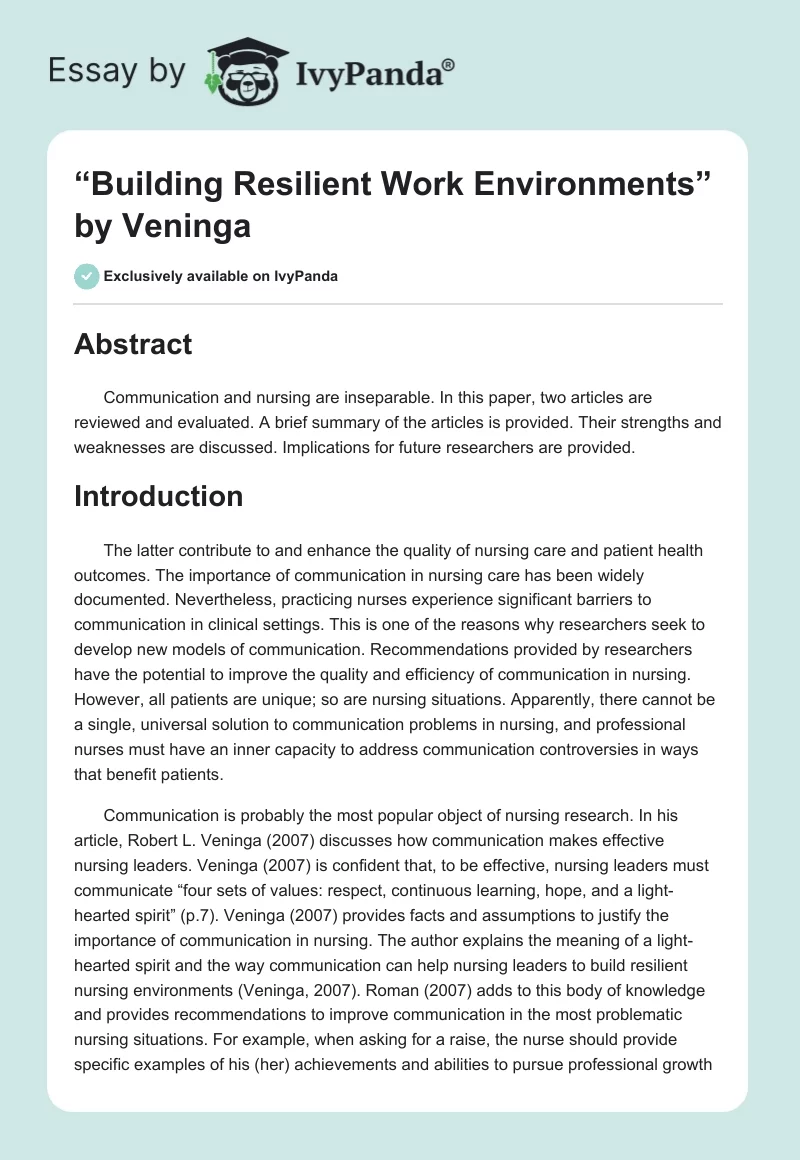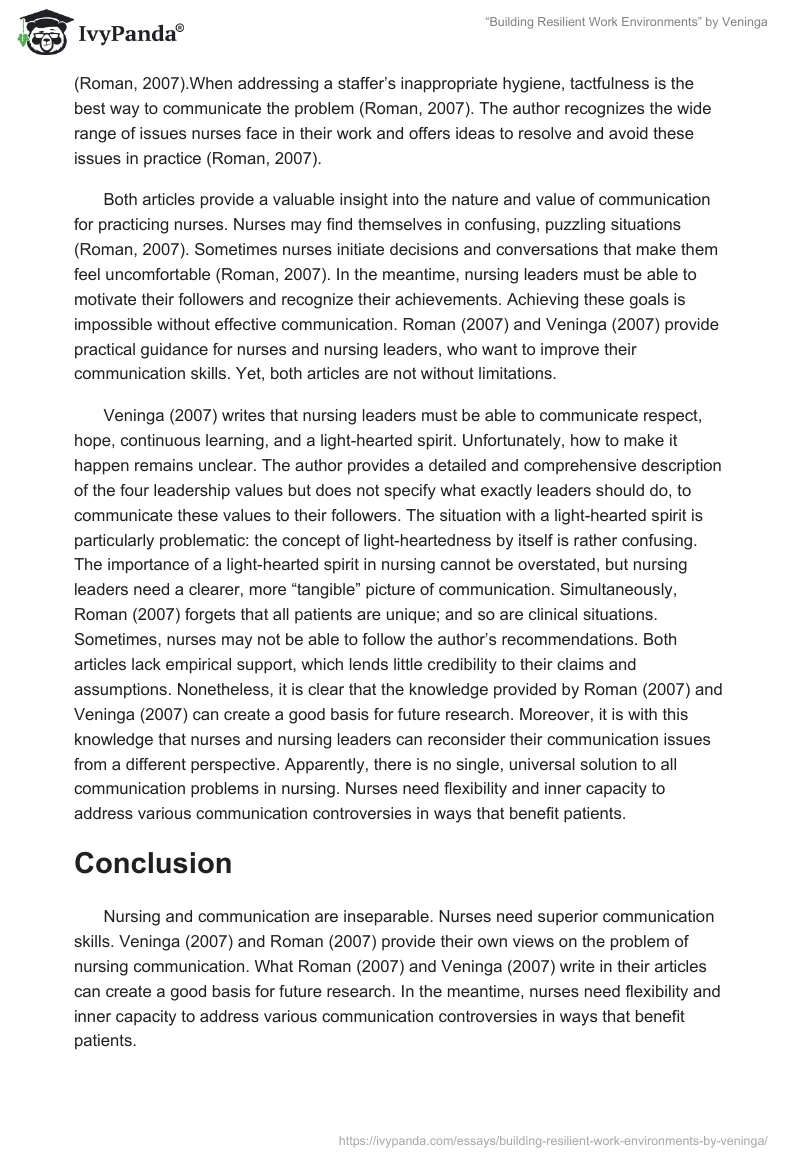Abstract
Communication and nursing are inseparable. In this paper, two articles are reviewed and evaluated. A brief summary of the articles is provided. Their strengths and weaknesses are discussed. Implications for future researchers are provided.
Introduction
The latter contribute to and enhance the quality of nursing care and patient health outcomes. The importance of communication in nursing care has been widely documented. Nevertheless, practicing nurses experience significant barriers to communication in clinical settings. This is one of the reasons why researchers seek to develop new models of communication. Recommendations provided by researchers have the potential to improve the quality and efficiency of communication in nursing. However, all patients are unique; so are nursing situations. Apparently, there cannot be a single, universal solution to communication problems in nursing, and professional nurses must have an inner capacity to address communication controversies in ways that benefit patients.
Communication is probably the most popular object of nursing research. In his article, Robert L. Veninga (2007) discusses how communication makes effective nursing leaders. Veninga (2007) is confident that, to be effective, nursing leaders must communicate “four sets of values: respect, continuous learning, hope, and a light-hearted spirit” (p.7). Veninga (2007) provides facts and assumptions to justify the importance of communication in nursing. The author explains the meaning of a light-hearted spirit and the way communication can help nursing leaders to build resilient nursing environments (Veninga, 2007). Roman (2007) adds to this body of knowledge and provides recommendations to improve communication in the most problematic nursing situations. For example, when asking for a raise, the nurse should provide specific examples of his (her) achievements and abilities to pursue professional growth (Roman, 2007).When addressing a staffer’s inappropriate hygiene, tactfulness is the best way to communicate the problem (Roman, 2007). The author recognizes the wide range of issues nurses face in their work and offers ideas to resolve and avoid these issues in practice (Roman, 2007).
Both articles provide a valuable insight into the nature and value of communication for practicing nurses. Nurses may find themselves in confusing, puzzling situations (Roman, 2007). Sometimes nurses initiate decisions and conversations that make them feel uncomfortable (Roman, 2007). In the meantime, nursing leaders must be able to motivate their followers and recognize their achievements. Achieving these goals is impossible without effective communication. Roman (2007) and Veninga (2007) provide practical guidance for nurses and nursing leaders, who want to improve their communication skills. Yet, both articles are not without limitations.
Veninga (2007) writes that nursing leaders must be able to communicate respect, hope, continuous learning, and a light-hearted spirit. Unfortunately, how to make it happen remains unclear. The author provides a detailed and comprehensive description of the four leadership values but does not specify what exactly leaders should do, to communicate these values to their followers. The situation with a light-hearted spirit is particularly problematic: the concept of light-heartedness by itself is rather confusing. The importance of a light-hearted spirit in nursing cannot be overstated, but nursing leaders need a clearer, more “tangible” picture of communication. Simultaneously, Roman (2007) forgets that all patients are unique; and so are clinical situations. Sometimes, nurses may not be able to follow the author’s recommendations. Both articles lack empirical support, which lends little credibility to their claims and assumptions. Nonetheless, it is clear that the knowledge provided by Roman (2007) and Veninga (2007) can create a good basis for future research. Moreover, it is with this knowledge that nurses and nursing leaders can reconsider their communication issues from a different perspective. Apparently, there is no single, universal solution to all communication problems in nursing. Nurses need flexibility and inner capacity to address various communication controversies in ways that benefit patients.
Conclusion
Nursing and communication are inseparable. Nurses need superior communication skills. Veninga (2007) and Roman (2007) provide their own views on the problem of nursing communication. What Roman (2007) and Veninga (2007) write in their articles can create a good basis for future research. In the meantime, nurses need flexibility and inner capacity to address various communication controversies in ways that benefit patients.
References
Roman, L.M. (2007). Finding the words: How to handle difficult conversations. Registered Nurse, 70(3), 34-38.
Veninga, R.L. (2007). Building resilient work environments: The role of communication. Creative Nursing, 3, 7-8.


